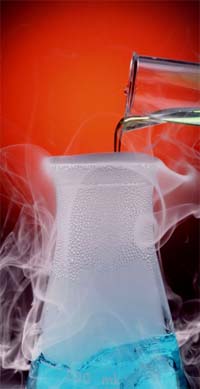Properties of acids
Acids are complex chemicals that contain hydrogen atoms that can be replaced with metal atoms and form salts.

Acids differ in basicity: Basicity is determined with the number of hydrogen atoms included in their composition. For example, sulfuric acid - H2SO4 - two-base, because it consists of 2 hydrogen atoms.
Acids are also divided into oxygen-containing and non-oxygen-containing. For example, salt - HCl-does not contain oxygen atoms, and H2СO3 - carbonic acid - contains 3 oxygen atoms and is oxygen-containing.
Now let's examine more detail the properties of acids and their chemical reaction with simple and complex substances.
Basic chemical properties of acids:
- reaction with metalls:
H2SO4 +Zn → ZnSO4 + H2 - Salt is formed and hydrogen is released
Depending on the concentration of the acid itself, various products of the chemical reaction are obtained. For example,
2H2SO4 + Cu → CuSO4 + SO2 +2H2O - in this case, the sulfuric acid is concentrated. Diluted - does not affect to copper (Cu) in any way.
- reaction with basic oxides and amphoteric oxides:
CuO + H2SO4 → CuSO4 + H2O - salt and water are formed;
SnO + HCl → SnCl2 + H2O (tin oxide-SnO-amphoteric oxide)
- reaction with bases and alkalis:
HCl + KOH → KCl + H2O - this reaction has name a neutralization reaction - salt and water are formed;
Cu(OH)2 + 2HCl → CuCl2 + 2H2O
- reaction with salts:
When chemical reactions of acids with salt must take into account the main signs of chemical reactions, namely, the chemical reaction will take place if gas is released or precipitation falls, etc.
N2CO3 + 2HCl → 2NaCl + CO2 + H2O - carbon dioxide is released CO2. Of course, if we speak accurately, then a weak carbonic acid is formed (H2CO3), which immediately breaks down into carbon dioxide and water. These reactions produce a salt and another acid (weaker than the one that reacted).
Now let's look at the main ways to get acids
Getting acids
Getting acids produced using the following chemical reactions:
- with reaction acid oxides with water:
SO3 + H2O → H2SO4;
CO2 + H2O → H2CO3;
- with reaction acid with salt:
NaCl + H2SO4(conc.) → HCl + Na2SO4 - this chemical reaction produces a new weaker acid (weaker than sulfuric acid, but also strong) and another salt;
- with reaction nonmetals with hydrogen and then dissolution their in water:
H2 + Cl2 → HCl (It should be remembered that this chemical compound itself - hydrogen chloride gas HCl is not acid. For its formation, the resulting HCl gas must be dissolved in water). They do the same with gas hydrogen sulphide:
H2 + S → H2S;
- with reaction when some simple substances are oxidized:
P + 5HNO3 +2H2O → 3H3PO4 + 5NO (in this chemical reaction, phosphorus (P) is oxidized with nitric acid (HNO3) to orthophosphoric acid (H3PO4) with the release of nitric oxide (NO).